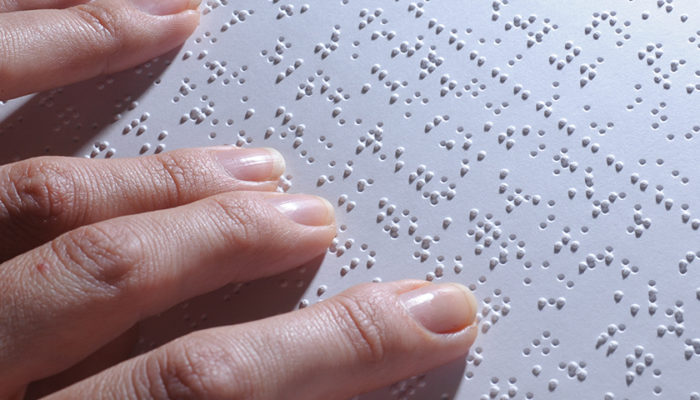By Maria Papagiannopoulou,
Developed by Louis Braille in the early 19th century, Braille is a tactile writing and reading system that has become a cornerstone in providing accessible education to the blind and visually impaired. Louis Braille was born on January 4, 1809, in Coupvray, France. At the age of three, he accidentally injured his eye with a stitching awl in his father’s workshop, leading to an infection that spread to his other eye, resulting in total blindness. At the age of ten, Braille entered the Royal Institute for Blind Youth in Paris, where he excelled as a student.
Despite the limitations of the existing methods of reading for the blind, such as raised print and embossed letters, Braille’s determination to access knowledge fueled his desire to find a better solution. In 1824, a former soldier named Charles Barbier visited the institute and introduced a tactile military code called “night writing.” This system used raised dots and dashes to represent sounds, allowing soldiers to communicate silently in the dark. Recognizing the potential of Barbier’s system, the young Louis Braille set out to adapt and simplify it for blind individuals. Braille reduced the number of dots in each cell, creating a six-dot system that formed the basis for the Braille code we know today. By 1829, at the age of 20, Louis Braille had developed the Braille code consisting of six dots arranged in two vertical columns of three dots each. Each combination of raised dots represents a letter, number, or punctuation mark. The system allowed blind individuals to read and write with their fingertips.

The Importance of Braille in Education
Equal Access to Information:
Braille is a lifeline for blind individuals, providing them with the means to access the same information as their sighted peers. It opens doors to literature, textbooks, and educational materials, enabling a more comprehensive and equitable learning experience.
Independence and Autonomy:
Learning Braille empowers visually impaired individuals to be independent learners. By being able to read and write using Braille, they gain autonomy in accessing information, taking notes, and expressing themselves in written form, fostering self-confidence and a sense of control over their education.
Literacy and Cognitive Development:
Literacy is the key to cognitive development, and Braille plays a vital role in facilitating this development among visually impaired individuals. By engaging with Braille from an early age, blind students can enhance their language skills, critical thinking, and overall cognitive abilities.

Integration into Mainstream Education:
Braille is a bridge that facilitates the integration of blind students into mainstream educational environments. It enables them to participate in the same curriculum as their sighted peers, reducing the barriers to inclusion and promoting a more diverse and enriching learning environment.
Braille Music Notation:
Braille is not limited to language and literature; it extends to music notation as well. This allows visually impaired individuals to explore and express themselves through music, contributing to a more inclusive arts education.
Digital Accessibility:
With technological advancements, Braille has seamlessly integrated into the digital realm. Electronic Braille displays and Braille-compatible devices have further enhanced the accessibility of digital content for blind individuals, ensuring they can navigate online resources and electronic documents with ease.
Employability:
Proficiency in Braille significantly enhances the employability of visually impaired individuals. It opens doors to various career paths, including fields such as education, law, and technology, where access to written information is crucial.
Challenges and the Way Forward:
While the importance of Braille in education is undeniable, there are challenges, including a shortage of qualified Braille teachers and the need for continuous advocacy to promote its widespread adoption. Additionally, as technology evolves, there is a need for ongoing efforts to ensure that digital content remains accessible to the visually impaired.
By recognizing the importance of Braille in education, we can work towards a more inclusive and equitable educational landscape, ensuring that every student, regardless of visual ability, has the opportunity to learn, grow, and succeed.
References
- Braille (2024) Wikipedia. Available here




